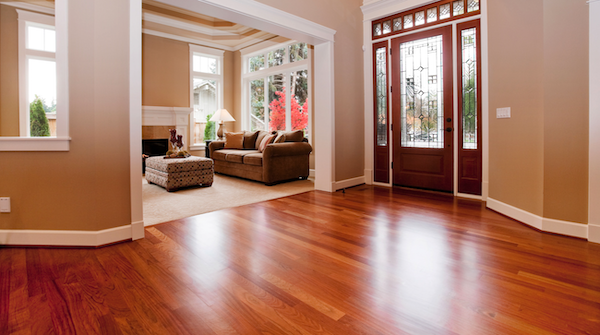H
- Installing Hardwood Floors: by the Wood Flooring Manufacturers Association
- Problems, Causes and Cures: manual by the National Hardwood Floor Association
Bear in mind that wood floors expand and contract with changes in humidity.
Here are some common causes of squeaking in hardwood floors:
Squeaking
Joist-Related
It may not be the hardwood, it may be the nails holding the subfloor to the floor joists. If the subfloor was left exposed to weather for a while before the building was finally dried in, corrosion and thermal cycling may have degraded the connection between nails and wood.
If joists were not installed crown up as they should have been a joist with crown down may have been installed between two joists installed crown up. When this happen and a nail gun was used for driving nails (extremely common starting in the early /mid 1980s) the nails may not have pulled the floor sheathing down tight to the joist. Over time, the sub floor will begin to slide up and down on the fasteners.
Fix: Re-fastening, the method will depend on the problem and access.
Seasonal Shrinkage
During cold weather, floors may contract, allowing boards to rub against each other. Less friction between fasteners and wood can allow boards to slide up and down on fasteners.
Buckling
Buckling is the result of exposure to excessive moisture. The source can be the dishwasher, inadequate ventilation, inadequate fastening, failed adhesive, or inadequate expansion space left during installation (boards installed very dry).
Fix: Replace, re-install, refasten as necessary.
Chatter Marks
Chatter marks are made during sanding. They’re usually the result of imperfections already present in the floor that are transferred through the wheels to the sanding belt as the sander moves across the floor.
Chatter may also be the result of the sanding drum being unbalanced, out of round, having hard spots, having compressed rubber, improper paper installation, a bad abrasive belt, worn pulleys, bad bearings, or running the sander in the wrong direction.
Fix: Correct any problems with the machine, and then use a disk sander.
Crowning
Crowning is when the center of each board appears to be higher than the edges. It’s typically caused by sanding a cupped floor, and then having it dry and flatten.
Fix: re-sand the floor after it has stabilized.
Excessive Gaps
Excessive gaps usually mean that the flooring was installed before it had a chance to dry adequately. It may be caused by heat sources that dry the flooring past equilibrium moisture content (EMC) with the room environment.
Fix: Fill gaps or remove the offending heat source.
Greenhouse Effect
When the home has been left unoccupied for a time with no airflow, sunlight through the windows creates heat, condensation and humidity increase in the home and the floor swells. When the occupants return and the heat or AC run almost continuously, the floor shrinks.
Fix: use the HVAC system and ventilation to stabilize the floor by regulating heat and moisture in the home.
Wood Destroying Insects
Holes, frass, wing piles, and evidence of internal galleries are all signs of wood destroying insect infestation.
Fix: Requires an exterminator.
Picture Framing
The edges of the room look like they’re a different color than the main floor area. It’s caused by sanding the room perimeter differently than the main portion of the room.
Fix: re-sand the floor and do it correctly.
Sticker Stain
Small stains perpendicular to the grain repeated every few feet. This condition is the result of rough lumber in contact with stickers used to separate the wood so that air could circulate through the stack when the flooring air- or kiln-drying.
Fix: None. These marks are permanent and indicate lower quality flooring.
The Entire Floor is Uneven
The flooring was laid over a concrete slab was uneven or has experienced movement or, flooring was laid over an uneven wood floor structure.
Fix: removal of flooring and correcting of substrate before flooring is replaced or reinstalled.
